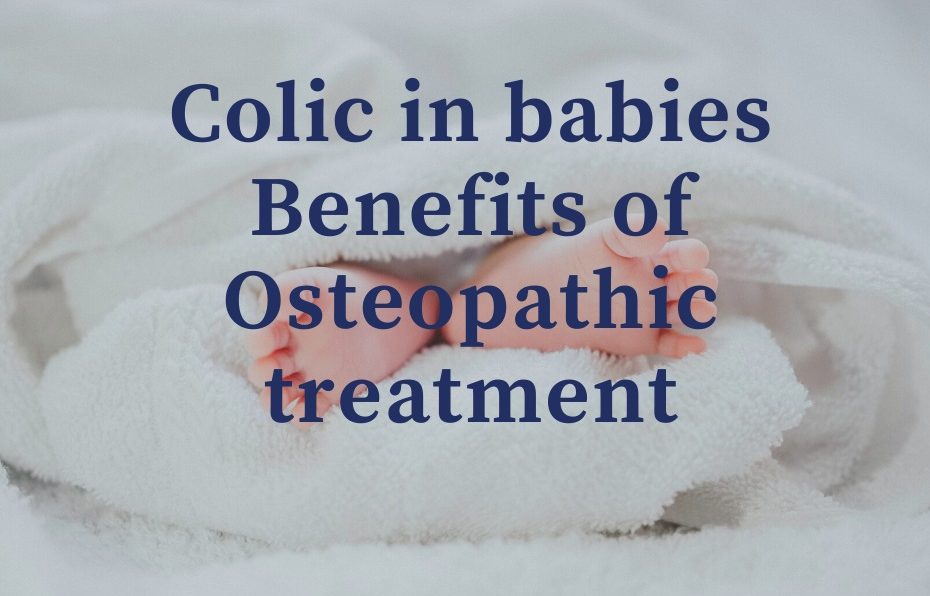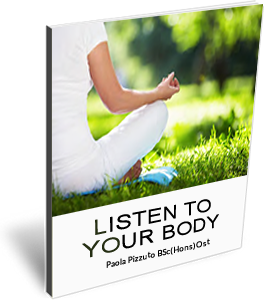
As parents know only too well, the baby with colic typically has excessive crying or irritability that does not respond to soothing, usually has abdominal distension, excessive gas and apparent abdominal pain.
The bouts of screaming are commonly concentrated in the late afternoon and evening and are prolonged, unpredictable and spontaneous.
I quite often hear parents of colicky baby saying that at time they feel helpless, tired and confused about what to do.
Fortunately, it doesn’t have to be that way, a lot can be done to help the baby. Colicky children respond quite well to osteopathic treatment.
Colic usually start in the first month of life and may persist until 3 or 4 months of age. Its etiology is multi factorial. These are some of the most common causes and contributing factors.
Immaturity of the nervous and digestive system
The intestinal barrier in neonates is more permeable, this means that larger molecules entering the intestine can cross the gut lumen to enter into the blood causing an inflammatory response.
This permeability appears to be increased in children with colic. While the development of the gut barrier function occurs in utero, there is ongoing postnatal maturation, which is affected by multiple factors including stress, nutrients, and microbes to mention a few.
Unresolved tension and strains acquired from the birth process.
Mechanical stress imposed on the baby during pregnancy and delivery can cause or aggravate colic. The baby’s body goes through lots of compressive forces during the birth process and the body is not always able to cope with these.
For instance retained compression at the base of the skull (following the birth process) can can “ irritate” nerves that are involved , among other function, in the digestive process and interfere with proper digestion.
Unresolved tension in the upper trunk, abdomen or pelvis will also frequently manifest as colic in a baby.
Osteopathic treatment aims at releasing many of the strains acquired from birth that may create hypersensitive and an irritable nervous system.
These will enable the musculoskeletal system, gastro-intestinal tract, nervous system, immune system and circulatory system to work effectively and optimally, allowing reduction of the colicky signs of discomfort and crying.
Osteopathic treatment is very gentle and babies will often be relaxed after treatment and sleep. Feeding also, quite often, become easier following the osteopathic treatment.
Colic have also been associated with alterations in the child gut micro flora.
For example the presence of Enterobacterial species seem to increase in infant colic in comparison to healthy infants. These bacteria are known to produce gas as a result of their metabolism, which could facilitate bloating and digestive discomfort in colicky babies .
In contrast, evidence suggests that a high proportion of Bifidobacterium and Lactobacillus in the infants microbiota is protective against colicky crying and fussing.
The modality of birth (vaginal versus caesarean birth), the use of antibiotics, breast feeding versus bottle feed are all example of factors that can influence the composition of gut flora in a child.
Several studies have demonstrated that the mode of delivery drastically affects microbial colonization. Babies delivered via Caesarean section experience altered, less beneficial microbial inoculation. Interestingly, the gut microbiota of a newborn will closely resemble the microbiota that it encountered during birth.
After parturition, the baby’s microbial community experiences rapid changes. Did you know that during infancy and the postnatal stage, skin-to-skin contact transfers valuable skin microbes to the baby.?
A number of these organisms possess antimicrobial properties that defend against pathogens. While human skin is a valuable inoculation of the new-born, the most powerful and overwhelming source of microbes arrives via breast milk . (Read more in my article here)
The Mother’s diet
In a breast fed infant, some food in the mother’s diet might cause or aggravate colic.
Eliminating possible food sensitivities in these cases is essential to help the child, while the gut mature. I suggest mum to keep a food/colic diary. Keep track of what you’ve eaten as well as the length and severity of baby’s crying.
You may find that some common culprits like wheat, soy, corn, dairy, spicy food might be associated with increased crying in baby a few hours later. If that’s the case, do your best to eliminate the inciting food from your diet. Just be aware that it may take up to a week to see the effects on the child symptoms.
Intolerance to formula milk
In these cases, switching to a different formula can have profound and almost immediate beneficial effects. I always suggest Certified Organic, Non-GMO formula.
Quite often I see confused and apprehensive parents who are given a myriad of advises by friends, family members etc… that make them very confused and fearful of doing something wrong for their child. Maybe this resonate with some of you reading this article.
During the consultation I also spend time to answer parents’ question and give them advices that they can implement at home to help alleviate the child symptoms.
Osteopathy is well known to help babies recover from the effects of birth and can help to reduce crying and colic, improve sleep and general contentment for the baby.
As an osteopath I am interested in every aspect of the health of your child. I begin the consultation by taking a detailed case history covering all aspects of health and development, from pregnancy to the present day.
This is followed by a comprehensive physical examination, assessing overall wellness and health, milestone attainment, joints, neuromuscular status, primitive reflexes etc…
Treatment is very gentle and relaxing. It involves very subtle movements, working with the baby’s natural physical tendency to seek balance, equilibrium and health. The treatment is aimed at releasing tensions wherever they are present in the body.
If you are concerned about the health of your child or you just want him or her to have a checkup, do not hesitate to contact me to discuss how I can help you.
Tag your friends who may be interested in reading this article.
Paola Pizzuto is a registered Osteopath in Edinburgh with a commitment and dedication to helping people achieve better health.
Connect with me on Facebook where I share lots of useful information.
- Temporal development of the infant gut microbiome. Rebecca E. Moore and Steven D. Townsend. Open Biol. 2019 Sep; 9(9): 190128.
- The influence of maternal vaginal flora on the intestinal colonization in newborns and 3-month-old infants. Gabriel I, Olejek A, Stencel-Gabriel K, Wielgos M. 2018. J. Matern. Fetal Neonatal Med. 31
- Benefits of skin-to-skin contact during the neonatal period: governed by epigenetic mechanisms? Almgren M. 2018. Genes Dis. 5, 24–26.
- Cesarean versus vaginal delivery: long-term infant outcomes and the hygiene hypothesis. Neu J, Rushing J. 2011. Clin. Perinatol. 38, 321–331.
- Human gut colonisation may be initiated in utero by distinct microbial communities in the placenta and amniotic fluid. Collado MC, Rautava S, Aakko J, Isolauri E, Salminen S. 2016. Sci. Rep. 6, 23129
 Receive for free the e-book I have specifically written for you, to help you learn more about the uniqueness and preciousness of your body and start a new journey of greater health and happiness. Your email is not shared with third parties and stored a GDPR compliant service provider (AWeber).
Receive for free the e-book I have specifically written for you, to help you learn more about the uniqueness and preciousness of your body and start a new journey of greater health and happiness. Your email is not shared with third parties and stored a GDPR compliant service provider (AWeber).